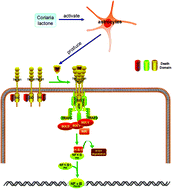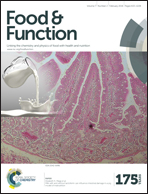Plant species forbidden in health food and their toxic constituents, toxicology and detoxification
Abstract
Many plants with pharmacological efficacies are widely used as ingredients in so-called “health foods”, but many of them are toxic. In order to ensure the safety of “health food”, the Chinese Ministry of Health has listed 59 materials that are forbidden from being used in health food and are called health food forbidden species (HFFS). This review focuses on 47 plants among the HFFS to discuss research regarding their pharmacology, toxicology, and detoxification methods. According to the literature published in the last 2 decades, the main constituents and the pharmacology of such plants are described here, especially their toxic constituents and toxicology. The toxicity mechanisms of several typical toxic components from the 47 plants are outlined and some effective detoxification methods are introduced. Although all HFFS are poisonous, they are considered to be useful in the treatment of many diseases. How to keep their pharmacological effects and at the same time decrease their toxicity is a great challenge. In the future, more attention should be paid to the application of modern science and technology in the exploration of the toxicology and detoxification of HFFS.


 Please wait while we load your content...
Please wait while we load your content...